Fluffy Focaccia Recipe with Cherry Tomatoes and Rosemary
This fluffy focaccia recipe is naturally leavened with sourdough and has a perfect balance of textures – crispy on the outside and pillowy soft on the inside. Topped with juicy cherry tomatoes, fragrant rosemary and aromatic olive oil, this focaccia bread is packed with Mediterranean flavors and aromas. It’s delicious as a snack on it’s own or great for making sandwiches.
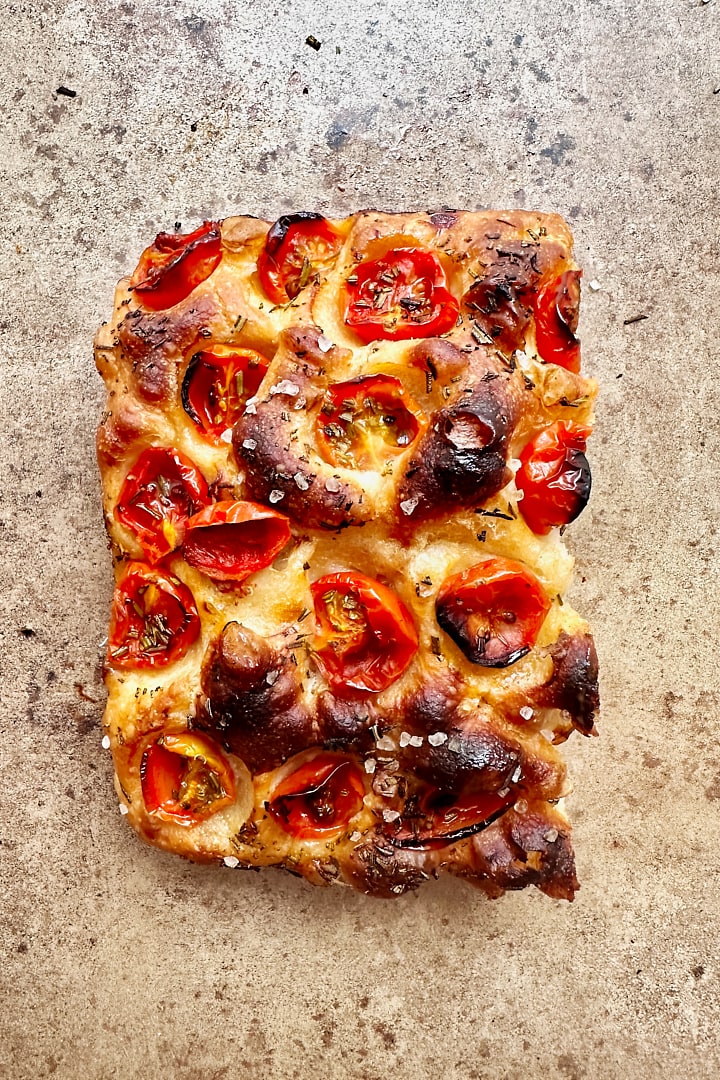
Ingredients and Tools You’ll Need
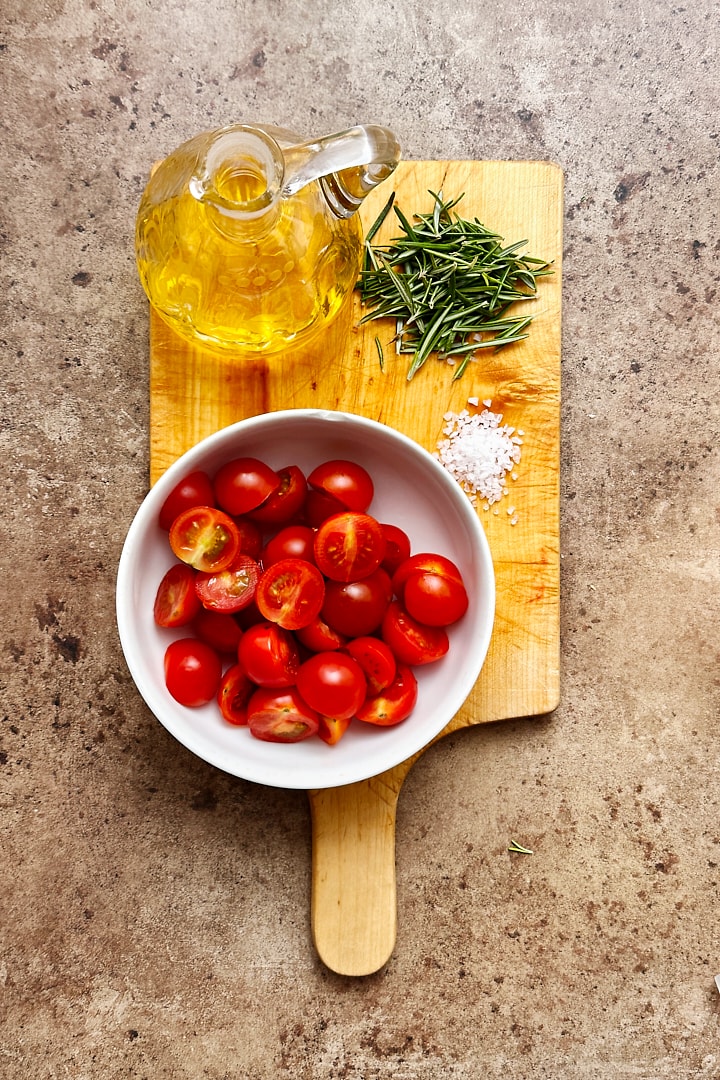
Step-by-Step Instructions
Step 1
The evening before, make the stiff leaven: Dissolve the sourdough starter in the water and add the flour. Mix well to combine. The leaven will have a stiff, dough-like consistency. You can briefly knead it on the counter to make sure there aren’t any dry bits of flour left. Let it rise in a glass jar overnight at room temperature. The next morning, it should look bubbly, active, and doubled or tripled in size.
Step 2
The next morning, make the main dough: In a large mixing bowl, dissolve the active leaven in the water and add both flours. Using a dough whisk, mix everything together until the flour is fully incorporated. Cover the bowl and let it rest for 30 minutes at room temperature.
Step 3
Add the salt and olive oil. Knead the salt and oil in with wet fingers until everything comes together into a shaggy dough. Slap & fold the dough on the counter for a few minutes to develop dough strength. This takes about 3 – 5 minutes. Afterwards, the dough should feel smooth and elastic. Transfer it to a lightly oiled bowl and let it rise in a warm spot ( 25° – 28° C) for the bulk fermentation.
Step 4
During the bulk fermentation, you will perform 4 sets of coil folds in 30 minute intervals. You will begin with the first set 30 minutes after you placed the dough into the bowl for the bulk fermentation. Then, keep repeating the coil folds every 30 minutes. After the last fold, let the dough rise for 2 more hours, until it looks bubbly and increased in size (about 50% – 75% increase).
Step 5
At the end of the bulk fermentation, line a baking dish with parchment paper and spread a thin layer of olive oil all over it. Transfer the dough from the proofing bowl to the baking dish and gently spread it out with your fingers, so it reaches the corners and edges of the dish. Cover it with plastic wrap and proof it in a warm spot for another 1.5 hours. Pre-heat the oven to 230° C during the last 30 minutes of the proofing time. The dough is fully proofed, when it looks pillowy and jiggles when you shake the baking dish. You should see lots of air bubbles below the surface of the dough. If it still looks a bit dense, let it proof longer.
Step 6
Once the dough is fully proofed, pour the olive oil over the dough and spread it out evenly. Dimple the dough with your fingertips to create the characteristic indentations. Add the chopped rosemary and lightly press the cherry tomatoes into the dough.
Step 7
Bake the focaccia with steam for the first 10 minutes at 230° C. Then, release the steam and finish baking for another 20 – 25 minutes until the crust looks crispy and golden brown. If it browns too quickly, you can loosely cover the baking dish with aluminum foil. The focaccia is done baking, when it’s golden brown and reaches an internal temperature of at least 93° C.
Remove it from the oven and let it rest and cool for at least 30 minutes before cutting it. Focaccia tastes best on the day it’s baked and when it’s still slightly warm.
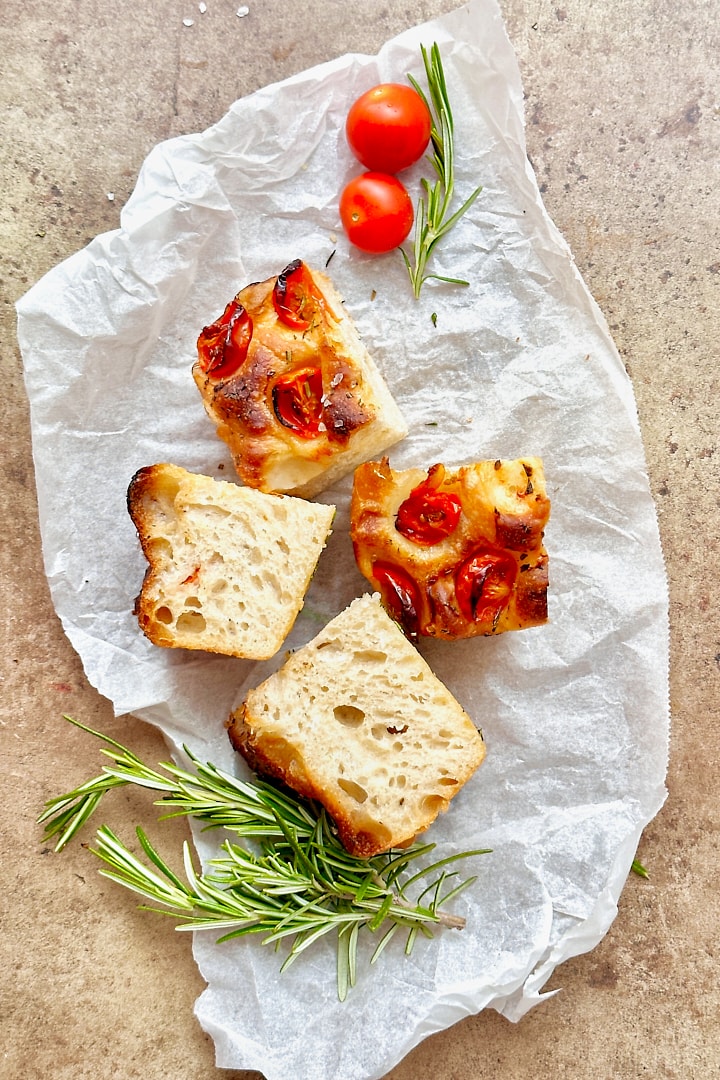
Sample Baking Schedule
Day 1
Day 2
Common Questions About Focaccia
More Sourdough Recipes You May Like:

Fluffy Focaccia Recipe with Cherry Tomatoes and Rosemary
Equipment
- Mixing bowl
- Dough whisk
- Baking dish
- Parchment paper
Ingredients
For the leaven:
- 30 g sourdough starter
- 30 g water – lukewarm
- 60 g flour
For the main dough:
- 100 g leaven – refresh the remaining leaven with flour and water and store it in the fridge for the next use.
- 340 g water – lukewarm
- 360 g bread flour
- 40 g whole wheat flour
- 10 g salt
- 25 g olive oil
For the topping:
- 2 tbsp olive oil
- 180 g cherry tomatoes – cut in half
- 2 sprigs fresh rosemary – finely chopped
- flaky sea salt to taste
Instructions
To make the leaven:
- The evening before, make the stiff leaven: Dissolve the sourdough starter in the water and add the flour. Mix well to combine. The leaven will have a siff, dough-like consistency. You can briefly knead it on the counter to make sure there aren’t any dry bits of flour left. Let it rise in a glass jar overnight at room temperature. The next morning, it should look bubbly, active, and doubled or tripled in size.
To make the main dough:
- The next morning, make the main dough: In a large mixing bowl, dissolve the active leaven in the water and add both flours. Using a dough whisk, mix everything together until the flour is fully incorporated. Cover the bowl and let it rest for 30 minutes at room temperature.
- Add the salt and olive oil. Knead the salt and oil in with wet fingers until everything comes together into a shaggy dough. Slap & fold the dough on the counter for a few minutes to develop dough strength. This takes about 3 – 5 minutes. Afterwards, the dough should feel smooth and elastic. Transfer it to a lightly oiled bowl and let it rise in a warm spot (25° – 28° C) for the bulk fermentation.
- During the bulk fermentation, you will perform 4 sets of coil folds in 30 minute intervals. You will begin with the first set 30 minutes after you placed the dough into the bowl for the bulk fermentation. Then, keep repeating the coil folds every 30 minutes. After the last fold, let the dough rise for 2 more hours, until it looks bubbly and increased in size (about 50% – 75% increase).
- At the end of the bulk fermentation, line a baking dish with parchment paper and spread a thin layer of olive oil all over it. Transfer the dough from the proofing bowl to the baking dish and gently spread it out with your fingers, so it reaches the corners and edges of the dish. Cover it with plastic wrap and proof it in a warm spot for another 1.5 hours. Pre-heat the oven to 230° C during the last 30 minutes of the proofing time. The dough is fully proofed, when it looks pillowy and jiggles when you shake the baking dish. You should see lots of air bubbles below the surface of the dough. If it still looks dense, let it proof longer.
- Once the dough is fully proofed, pour the olive oil over the dough and spread it out evenly. Dimple the dough with your fingertips to create the characteristic indentations. Add the chopped rosemary and lightly press the cherry tomatoes into the dough.
- Bake the focaccia with steam for the first 10 minutes at 230° C. Then, release the steam and finish baking for another 20 – 25 minutes until the crust looks crispy and golden brown. If it browns too quickly, you can loosely cover the baking dish with aluminum foil. The focaccia is done baking when it’s golden brown and reaches an internal temperature of at least 93° C.
- Remove it from the oven and let it rest and cool for at least 30 minutes before cutting it. Focaccia tastes best on the day it’s baked and when it’s still slightly warm.
Video
@notjustfood_blog Fluffy sourdough focaccia with juicy cherry tomatoes and fresh rosemary ✨❤️ #focaccia #sourdoughbaking #breadbaking #fyp ♬ Hey Lover – The Daughters Of Eve

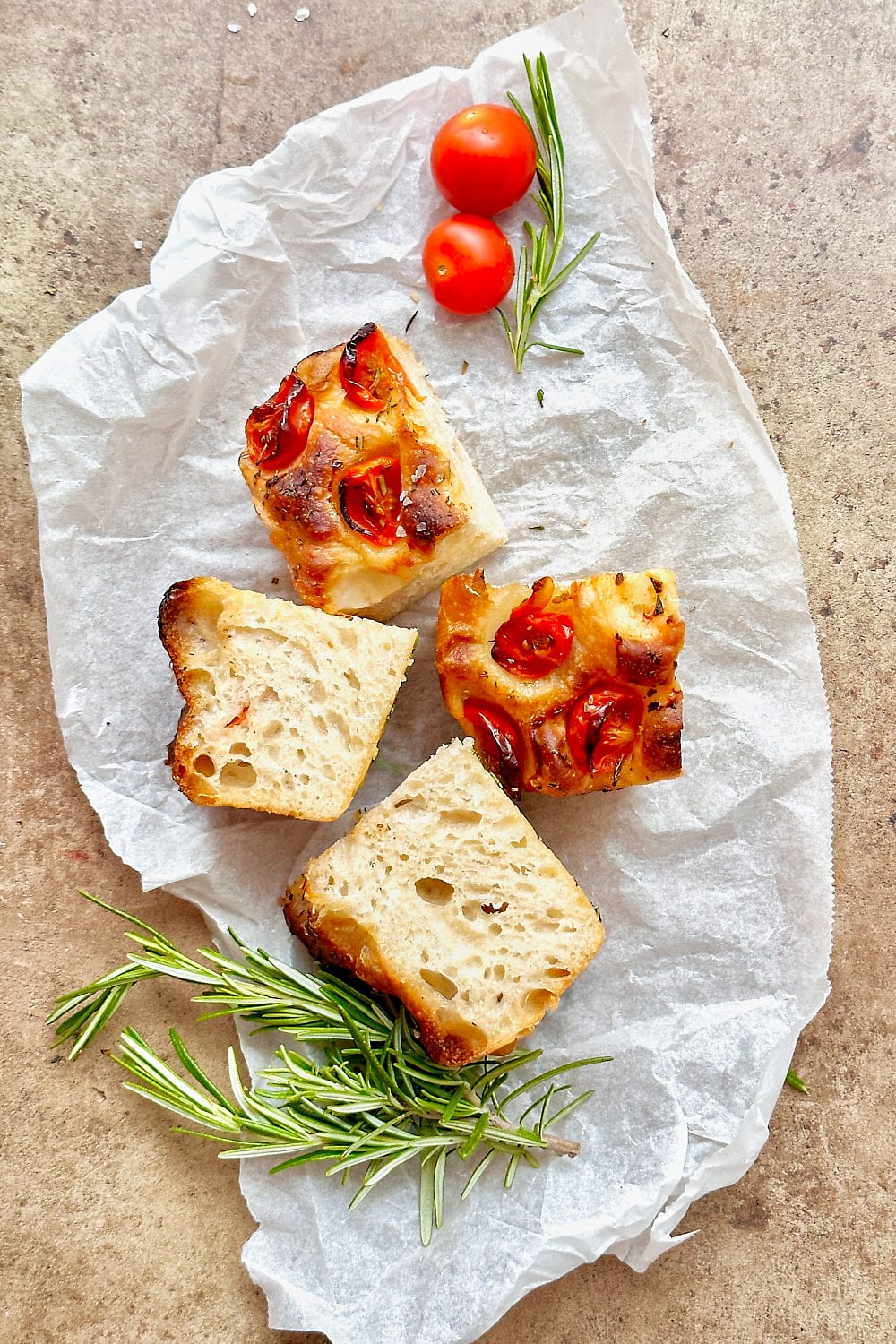
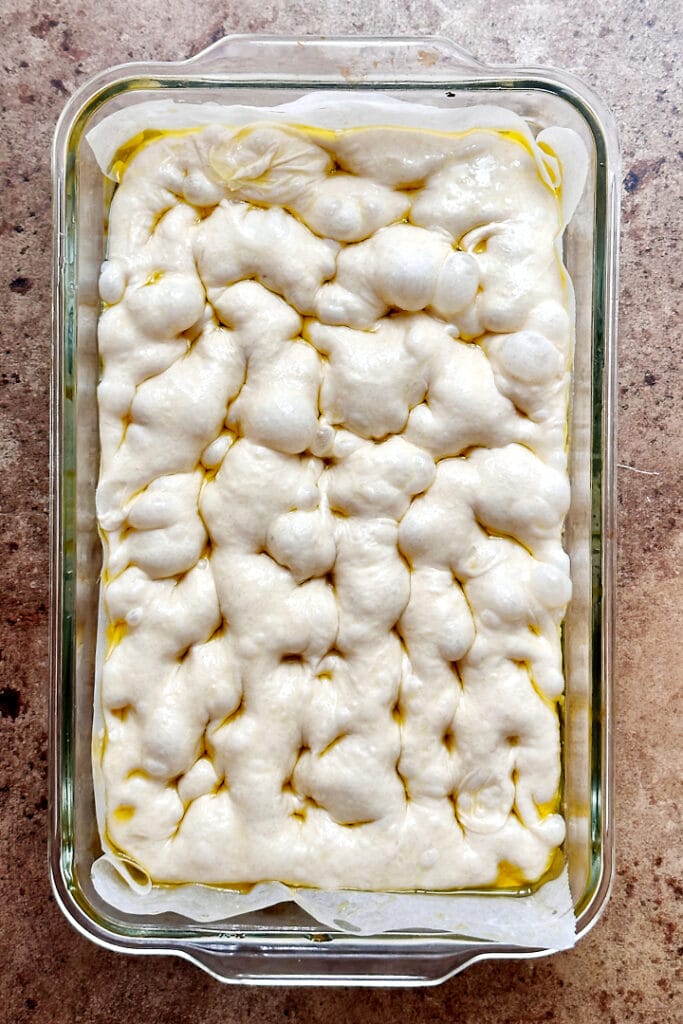
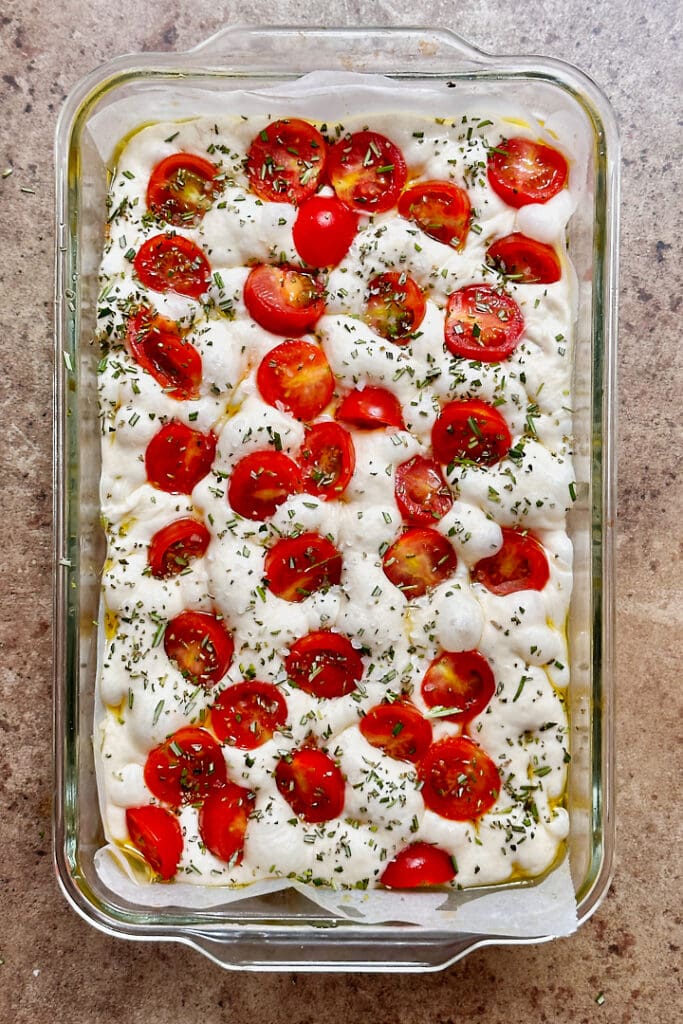
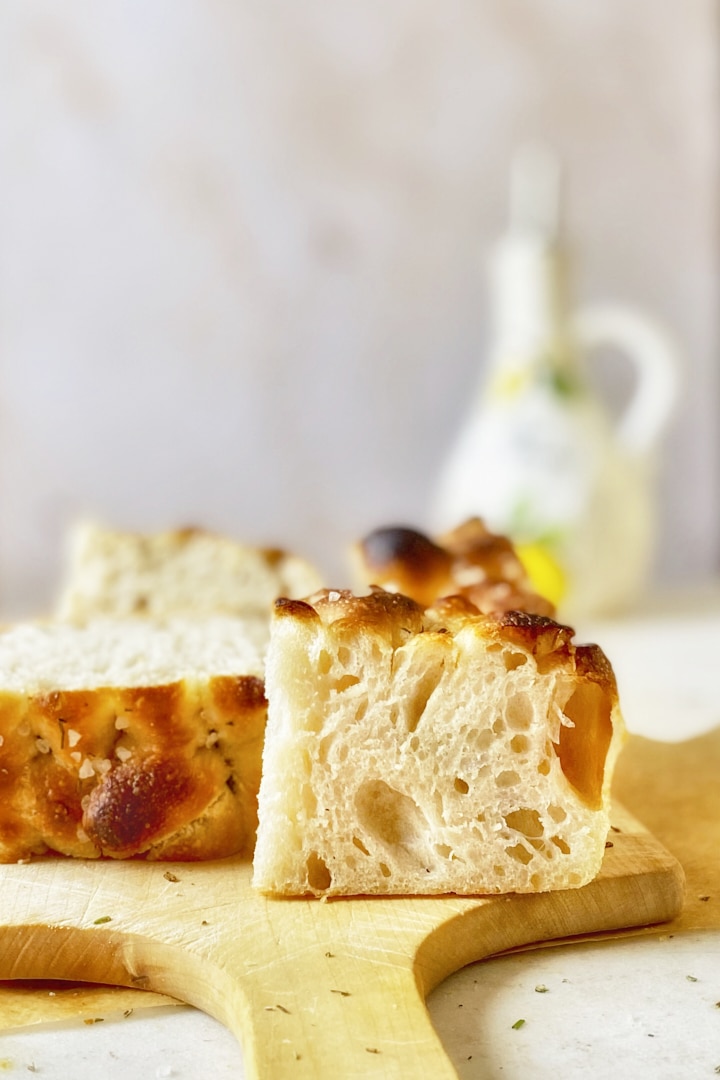
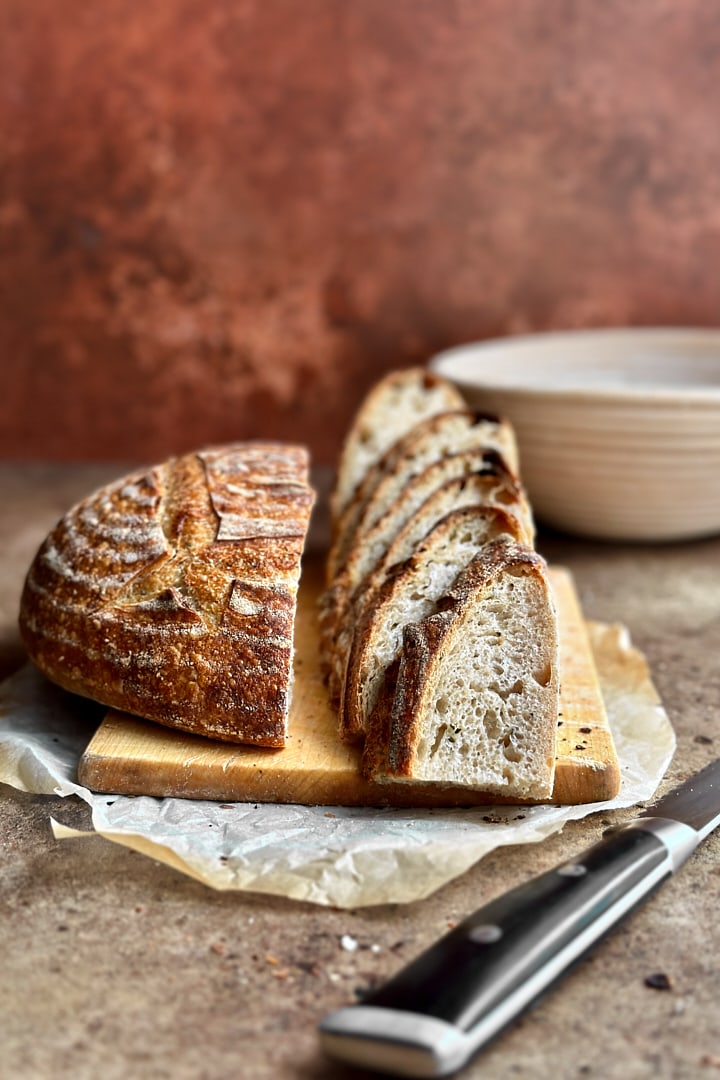

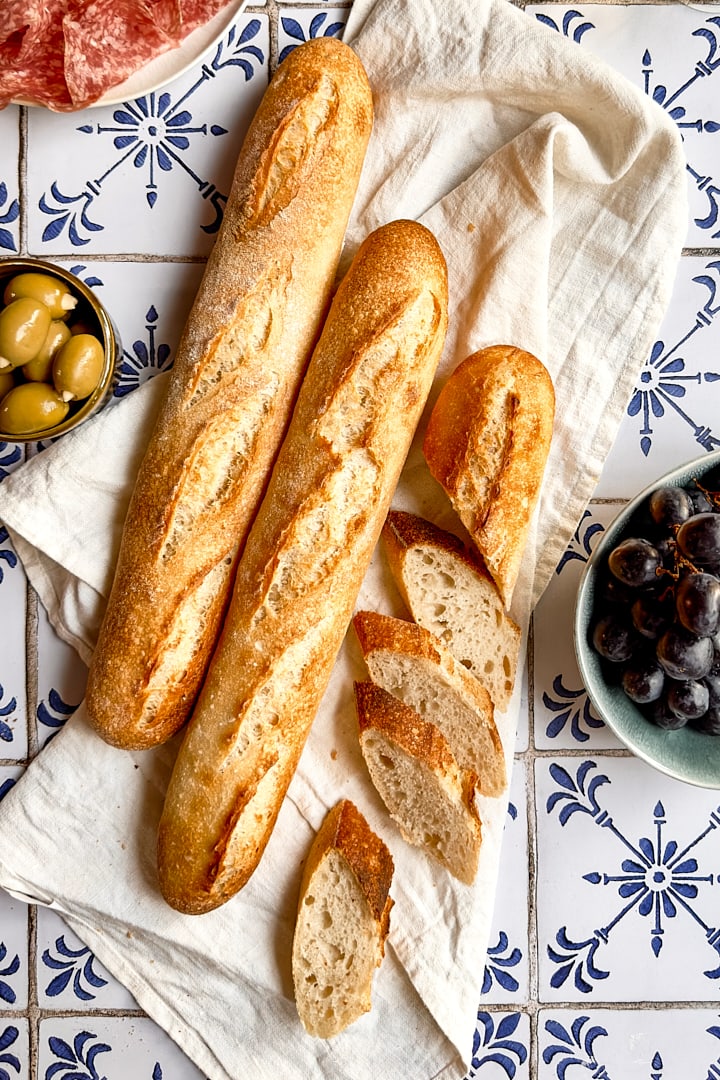
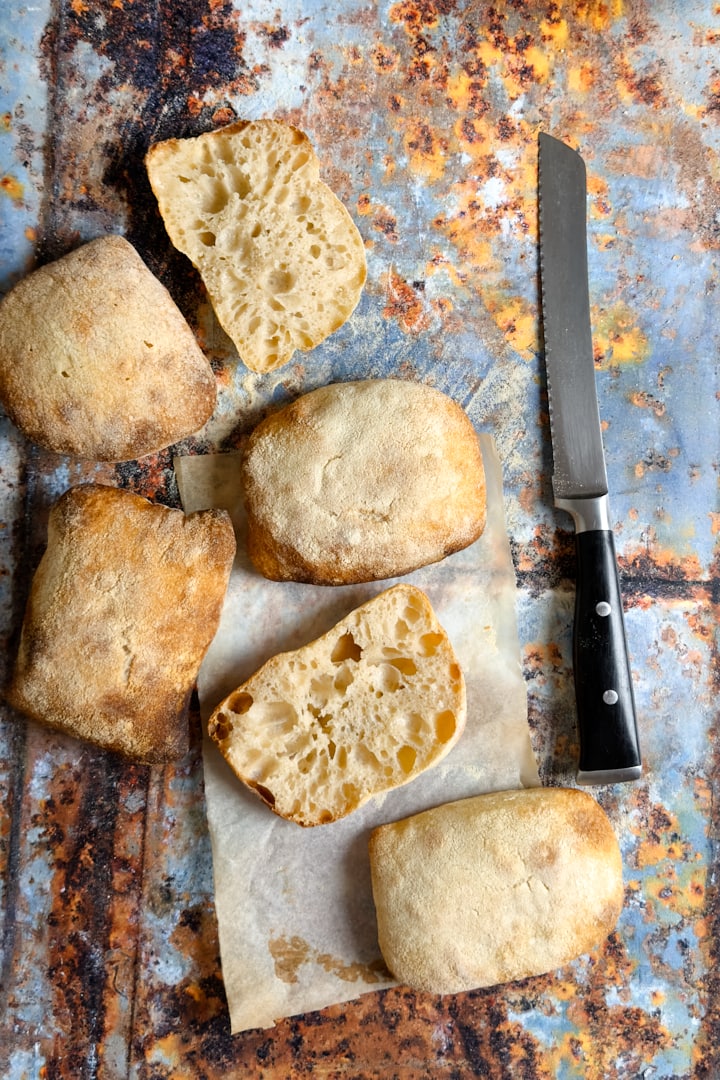
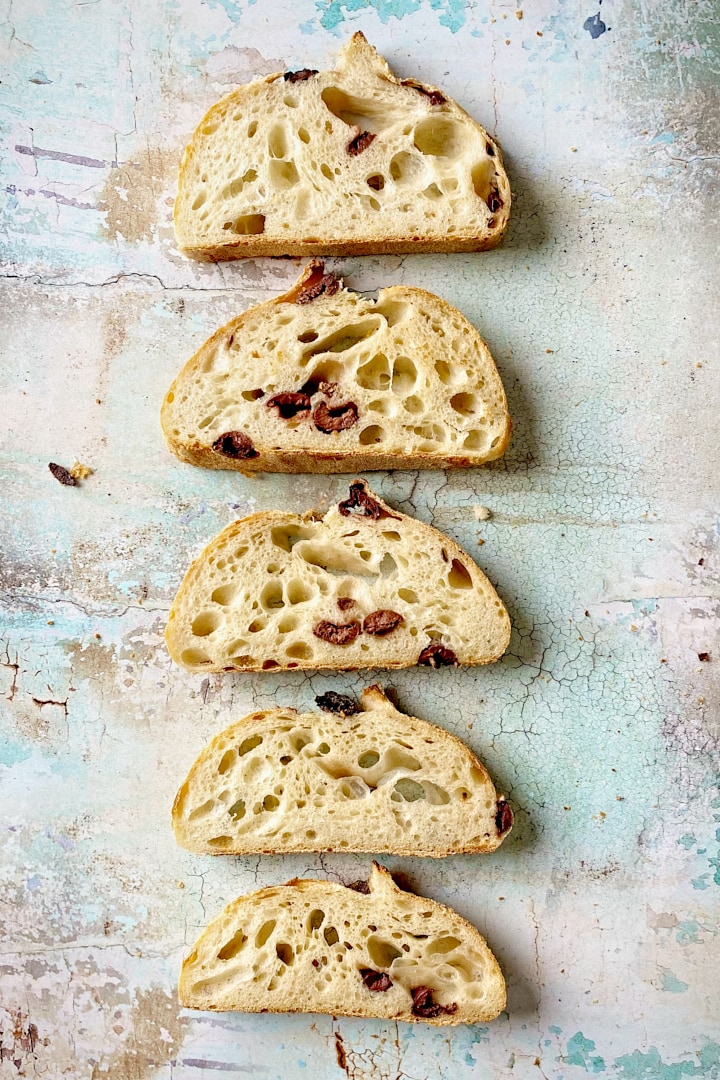

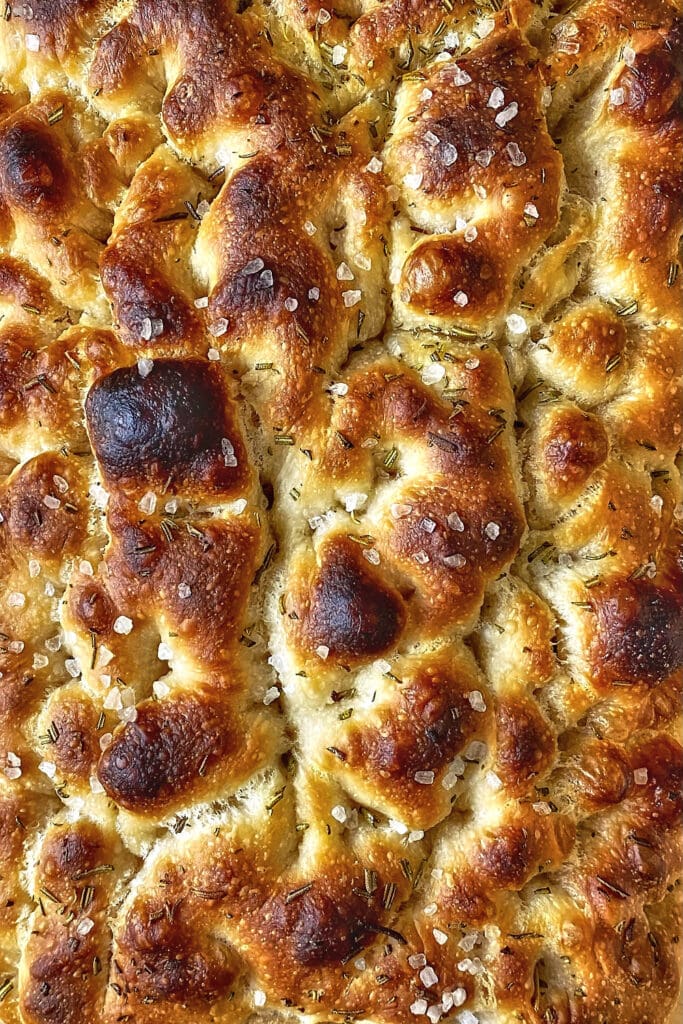

Best information and pictorial! 😁
Thanks a lot, Pamela! Glad you like it 🙂